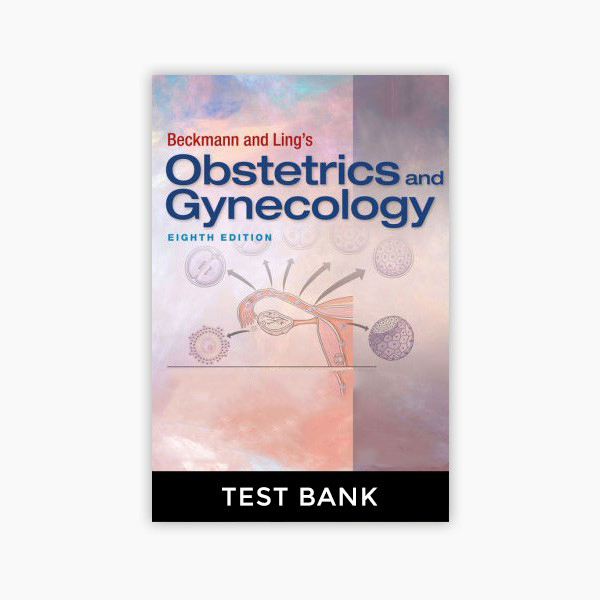Test Bank for Beckmann and Ling’s Obstetrics and Gynecology 8th Edition By Casanova
Chapter 1: Women’s Health Examination and Women’s Health Care
Management
1:
Elevating the head of the examining table approximately 30 degrees facilitates
a: the observation of the patient’s responses
b: the ability of the patient to comfortably look around to distract her from the examination
c: the contraction of the abdominal wall muscle groups, making the examination easier
d: comfortable blood pressure measurement
e: the physician not being distracted by eye contact with the patient
2:
Which of the following uterine positions is most associated with dyspareunia?
a: Mid position, retroflexed
b: Retroverted, anteflexed
c: Anteverted, anteflexed
d: Retroverted, retroflexed
e: Midpostion, anteflexed
3: Inquiry concerning adult and child history of sexual abuse should be included in the sexual history
a: if time permits
b: in visits where there are suspicious physical findings but not otherwise
c: in visits where sufficient time is allotted
d: in all new patient visits
e: in visits where a specific indication is noted
4: Peau d’orange change in the breast is associated with
a: edema of the lymphatics
b: jaundice
c: too vigorous breastfeeding
d: overly tight undergarments
e: galactorrhea
5:
Which kind of speculum is often most suitable for examination of the nulliparous patient?
a: Morgan’sspeculum
b: Endoscopic speculum
c: Ling speculum
d: Graves speculum
e: Pederson speculum
6:
Which uterine configuration is most difficult to assess for size, shape, configuration, and mobility?
a: Mid position
b: Anteverted
c:
a: 9 months
b: 36 months
c: 12 months
d: 18 months
There is no difference in difficulty
d: Retroverted
7:
Which type of speculum is most appropriate for the examination of a parous menstrual woman?
a: Ling speculum
b: Graves speculum
c: Pederson speculum
d: Endoscopic speculum
e: Morgan’s speculum
8:
Menopause is defined as the cessation of menses for greater than
a: all the time
b: almost never
c: about one-half of the time
d: about three-quarters/most of the time
e: 24 months
9:
In a woman describing sufficiently frequent sexual encounters, infertility typically is described as a
failure to conceive after
a: 3 months
b: 9 months
c: 12 months
d: 18 months
e: 6 months


